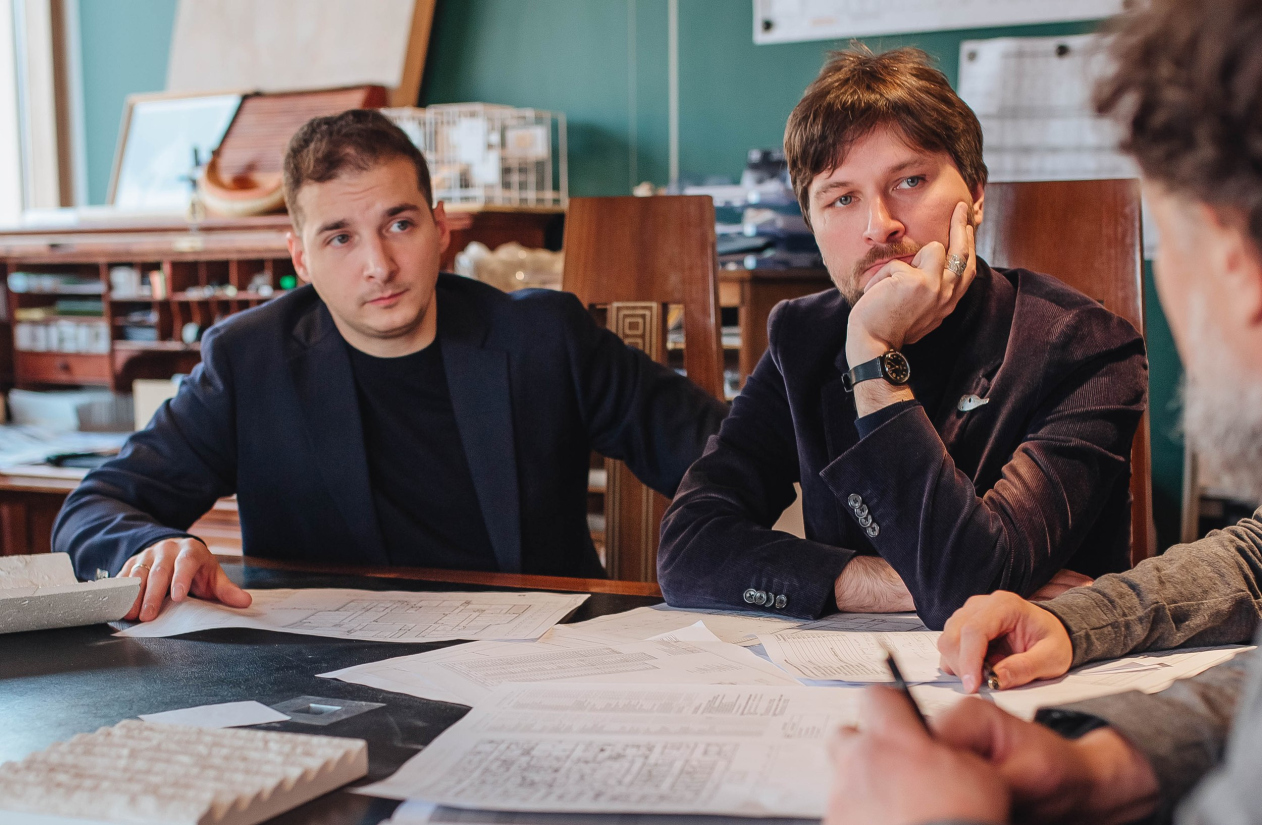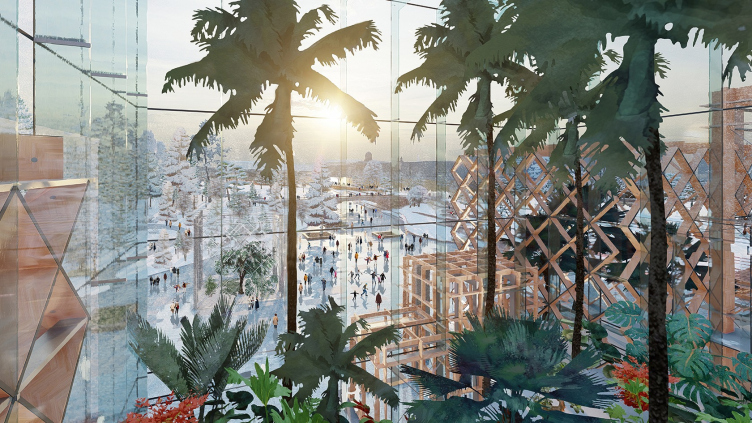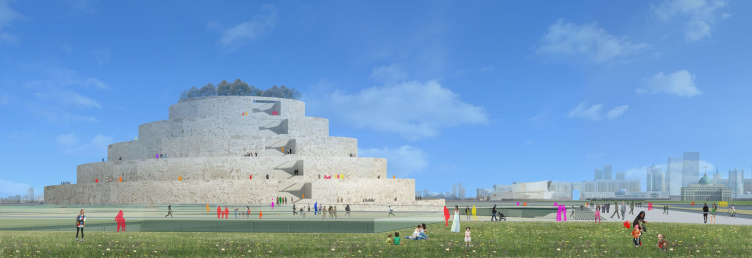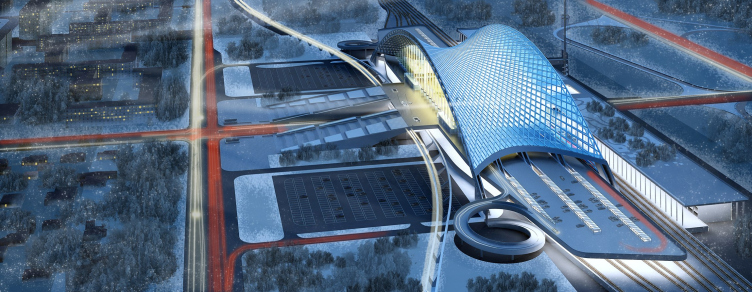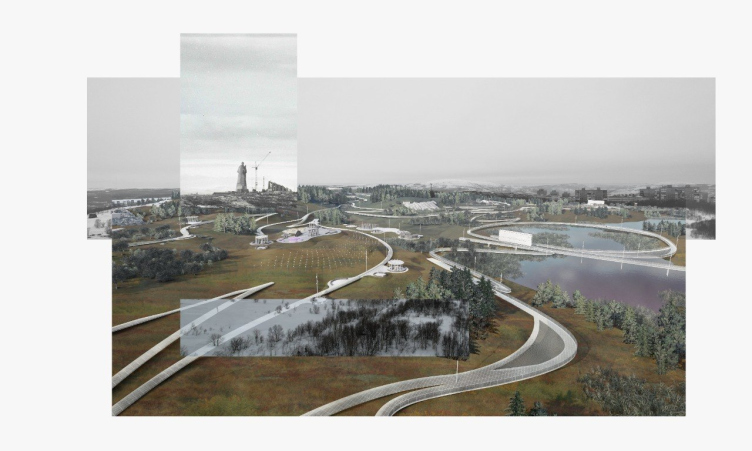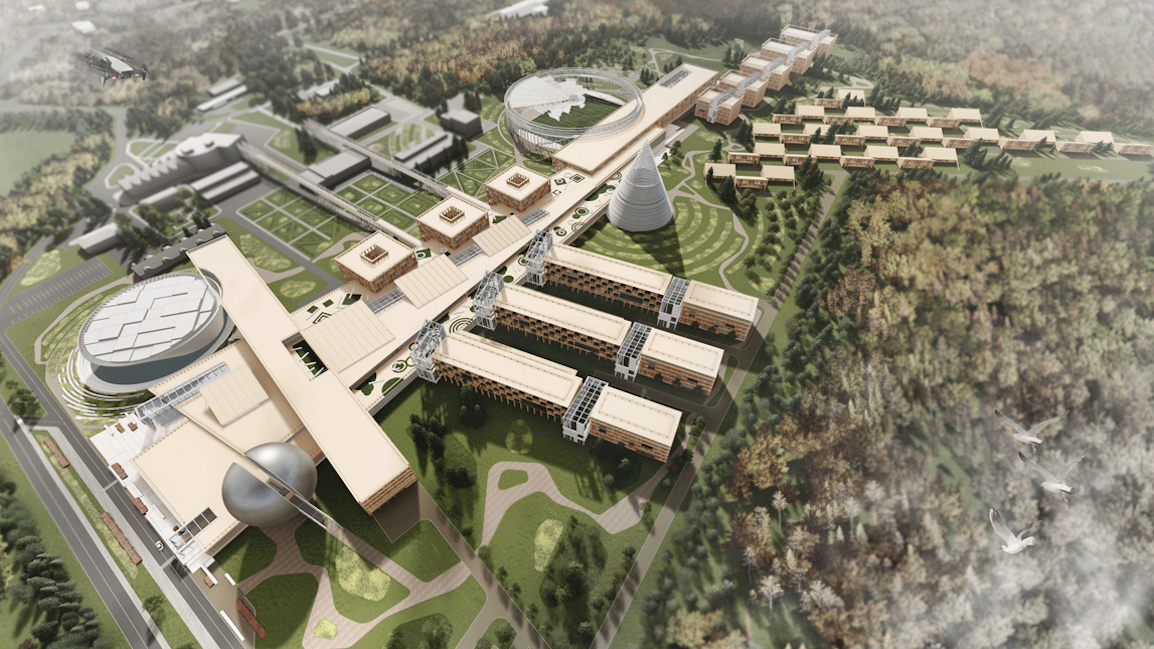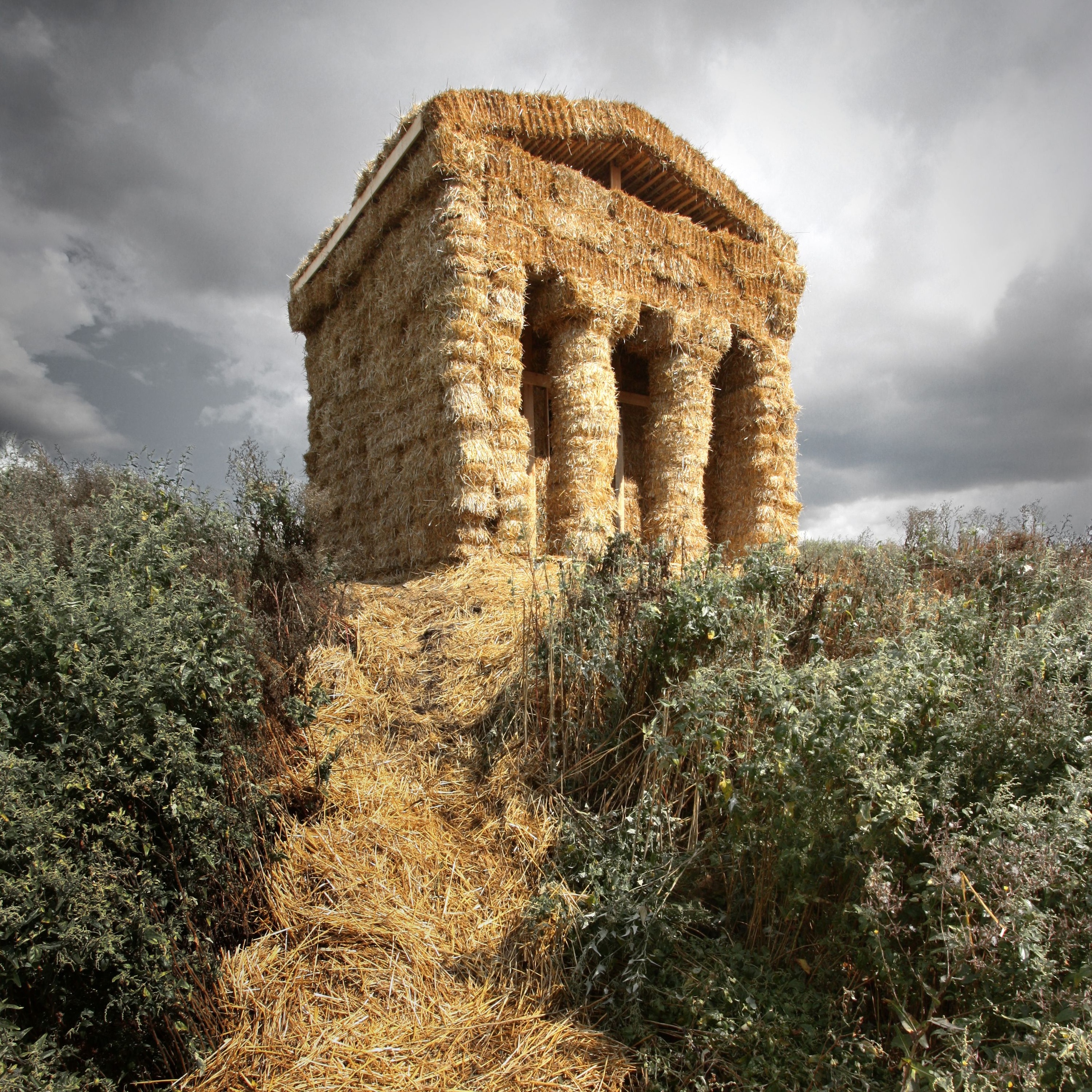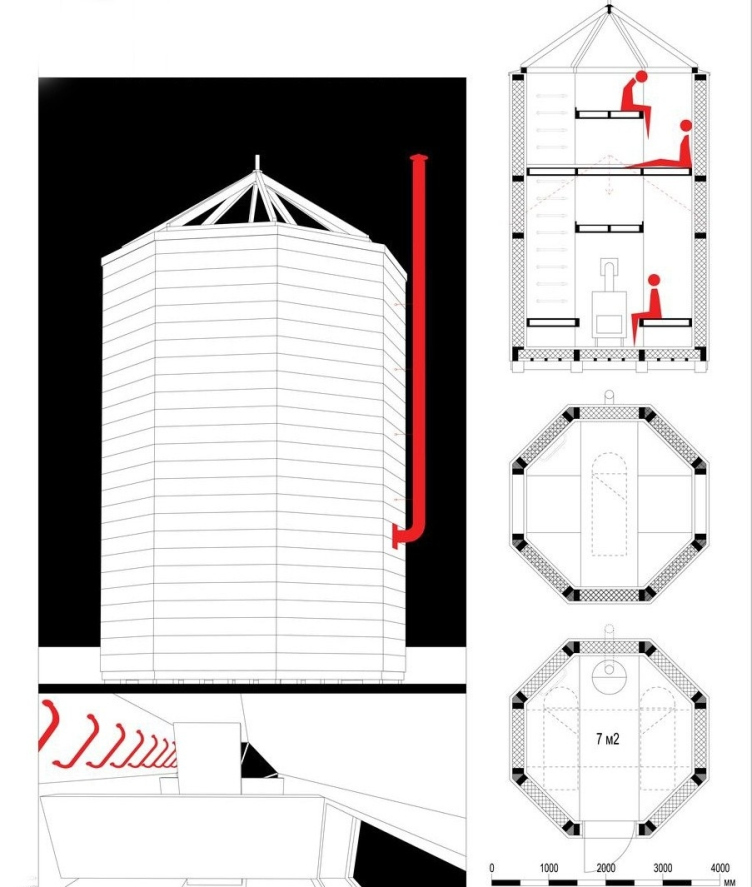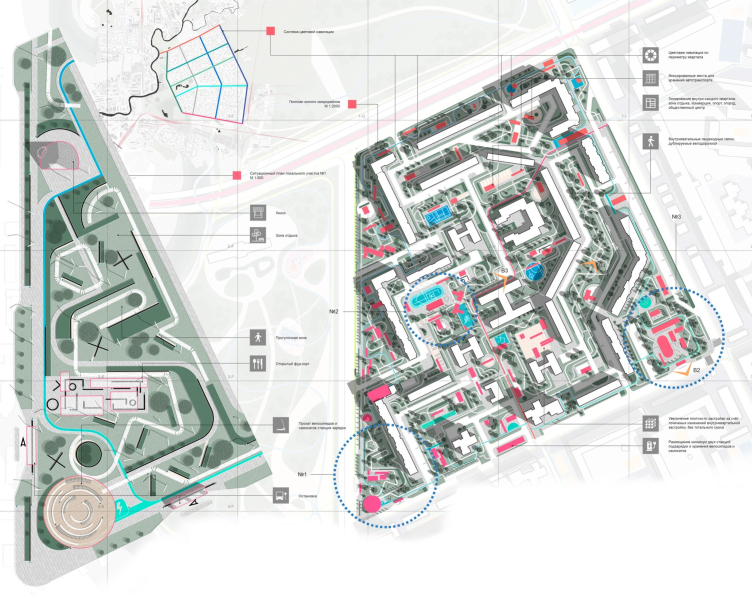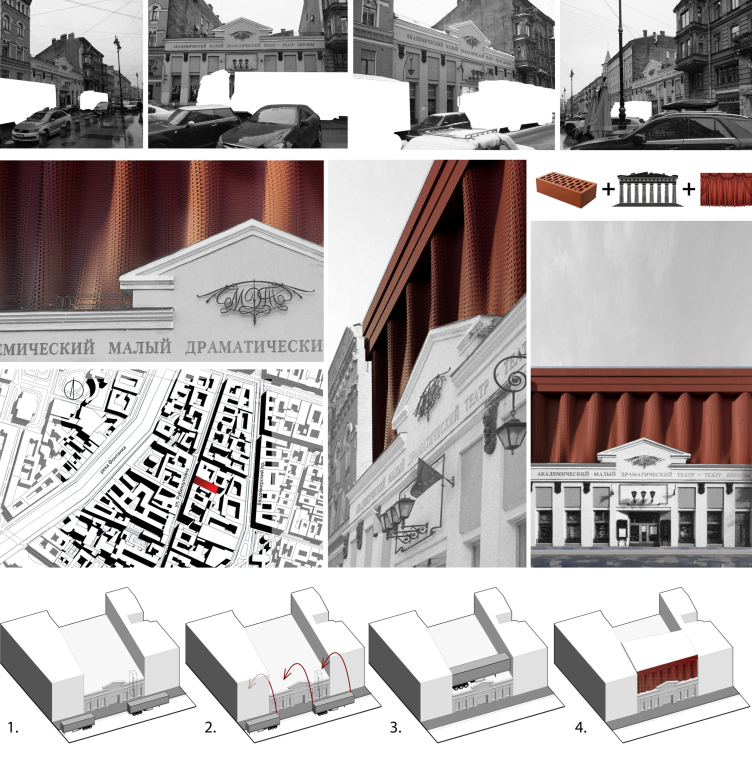Evgeny Novosadyuk: I am 34.
Can you please share about the time before Studio 44? Where did you study, where did you work, who were your teachers?
At some point, my parents asked me what I was going to be. I wanted to be neither a lawyer like my dad nor a veterinarian like my mom. One of the options was going to the Lyceum of the Academy of Fine Arts, and they had an architectural class there. And, after a certain hiatus, I did enter the Lyceum – back in junior high school, I did a lot of drawing, but later on I was more into sports, and I even got to the candidate for the master of sports in fencing.
At the same time, architecture was never far away: I really enjoyed walking downtown or visiting a museum. In addition, my uncle was an architect, but I only fully realized that after I entered the Lyceum. My subliminal passion for the city environment turned into a desire to take part in its creation.
Even now, having visited many architectural capitals of the world, a come back home from a business trip or a vacation, from Paris or from Rome, and I come to the five-corner building, see the embankments, and the avenues and think again and again – what a beautiful city we got!
Romantic park “Tuchkov Buyan”
Copyright: © Studio 44, West 8
What was your way from studying at the Academy of Fine Arts to landing a contract with Studio 44?
In the Academy, the students are immersed in an environment consisting of sturdy professionals, who define the mood and the trends of the architecture of St. Petersburg.
During the first year, the students are exposed to the basics of the profession, they study architectural graphics, wash drawing, and basic architectural elements. This is a classical school, and it’s great that it is preserved. By your second year, you need to choose a studio where you will study further, and you already know, with which of the professors you want to work, and with whom you expect the most interesting and the best results. By the end of your second year, you are quite at home with the material, and you communicate with older guys – this is a time-honored tradition in the Academy: since personal communication still matters a lot, the younger students are attached to doing purely technical tasks, and during the process of helping older guys they start thinking differently – a mutually beneficial experience.
I was able to continue my education in Vladimir Popov studio that had some of the best consultants in the Academy, and they are still in the public eye now: Yuri Zemtsov, Anatoly Stolyarchuk, Sergey Padalko, and, of course, Nikita Yavein. To get shortlisted for the studio, you need to have not so much good grades as interesting projects – if the professor sees your potential in them, you stand a better chance.
I started working for the studio at the end of my fourth year. A girl called me, whom I had helped a little with her diploma work in the Academy, and she said that technical help was needed in the project of an Almazov housing complex. Back then, I was interested in all kinds of things (well, so I am now, in fact) – and I agreed. But that was a bit of a challenge because, you know, a novice always has a hard time doing routine work. All these calculations – now they are made automatically, using special software, and back then it was done manually, and it was a nightmare. But you had to go through it – it was a valuable experience too.
Treatment and rehabilitation facility "Federal Center for Heart, Blood, and Endocrinology Research named after Vladimir Almazov". Construction, 2015 © Studio 44
Copyright: © Studio 44
There was also a time when I was periodically invited to help with competition projects – and I remember happy sleepless nights when we were preparing applications for the Astana railway station contest, and the Kazakhstan History Museum. These were significant milestones, after which the older guys in the Academy started to look differently upon you.
Architectural concept of the Museum of History of Kazakhstan
Copyright: © Studio 44
Astana Railway Station
Copyright: © Studio 44
How did your career with the company develop? When and how did you become a partner?
Well, it was a sine wave. If you’re talking years, this is one figure – I became a partner in ten years, although in total I have worked for them for 12 years. If you’re talking about projects, this is a different figure and different scales, ranging from “paper” competition projects to actual working documentation. Perhaps, this is what I owe my success to – because I was able to accumulate the experience at different project stages.
A very important milestone for me was the project of Tuchkov Buyan, where I was the head of the group from the Russian side. It was then that my attitude towards what I was doing changed because I realized that the result directly depended on how much effort I invest in the project, and how I can organize myself and the guys from the group, and channel our energy to ultimately deliver a high-quality product no matter the circumstances. There was a challenge of mental character there as well: for a week and a half, we worked at the West 8 office – that was quite a shakeup, because we had to leave our comfort zone and work in someone else’s office with totally different design principles. And it was also important not to get lost in it, and stand our own ground. We ultimately won, surpassing Bjarke Ingels and Herzog & de Meuron – which is quite a result by any standards. The very situation made us grow up quickly. Without triggers that will make you overcome something, you may never make it to the next level.
Romantic park “Tuchkov Buyan”
Copyright: © Studio 44, West 8
Also, our leader, Nikita Yavein, organizes work in such a way that you now and then have no other choice than to grow professionally. And he provides opportunities for that by posing unconventional tasks that at some point give you full carte blanche. You think you’re not ready yet, but the task has already been set. If you cope with it, this means that you justified his trust, and if you don’t… frankly, I cannot remember such an occasion.
Why do you think Nikita Yavein took you on as a partner?
Probably, one of the big factors was that, despite the complexity of the tasks he would set for me, I never said “no, I think I’m pass” – rather, it was a “do or die” thing. Each next challenge makes you psychologically stronger, and you no longer have that inner tremor, or fear of doing something new, challenging, and complex. What is important, however, is not to think of yourself as a seasoned pro and loosen control – because there is an urban myth of high-altitude construction workers who tend to fall to their death from third or fourth floors – simply because they know how to handle much greater heights.
What changed after you received the partner statues, besides the volume of work? Does it make you feel different?
The partner status is not some kind of honorable medal, really. Rather, it is an advance, and a bar that you need to set higher and higher. And this adds to your responsibility for the end result. Besides, in addition to the professional tasks, you also start performing representative functions, such as interviews, lectures, and conferences.
What is your vision of the further development of your career? What would you want to be doing in 5/10/20 years from now? Do you have plans to start, perhaps, your own company?
I don’t look that far. I am totally engrossed in our current projects – they are exciting for me, and we have a great team. And I have quite enough of independence within the framework of Studio 44. And I see that I still have a lot to say at this stage, there is still room for the next step, and for further development – this is what matters the most to me.
What projects can you specifically mention since you became a partner?
The Tuchkov Buyan project proved that Studio 44 does have potential for working with landscape. After that, there were two park projects – a linear one in the “Galaktika” housing project, and a contest project in Murmansk. Park projects now lie within the area of our interests. Another interesting project for us was the Rosatom one – the National Center for Physics and Mathematics in the city of Sarov. Currently, we are doing a mountain resort not far away from Sochi.
Studio 44 intensively promotes and develops BIM-design, and creates its own software. This allows us to work on projects with complex terrain and non–standard source data – we can simulate the situation and adequately calculate costs.
Competitive concept of the development of the territory of the Victory Park in Murmansk
Copyright: © Studio 44
National Center for Physics and Mathematics
Copyright: © Studio 44
Are there projects that you do outside your main area of work?
When I first came to work for Studio 44, George Snezhkin was still working here. Once we decided to go to an architectural festival, not even really knowing each other – George Snezhkin, Andrey Voronov, Kesha Padalko, and Sasha Berzing. We all hopped in Kesha’s car and went to that festival in Latvia, where we did a project of a floating stage, and where we ultimately won. At the award ceremony, they jokingly called us “Lesosplav” (“Timber Rafting”) – the name stuck and existed for about 3 or 4 years. Back then, there were a lot of festivals, and we did various competition projects, one of them being a temple made from hay, like a giant haystack, for which we received the “Echo Leonidova” award, and another one, which was a “Rocket Hostel”. The studio was OK with letting us go on such creative “escapades”, and they gave me an outlet beyond routine work. I would wish such an auto-training to everyone.
THE TEMPLE IN ANTAH. Tula region, Zaoksky district, “ArchFarm”. XIII architectural festival “Cities”
Copyright: © Lesosplav team. Architects: Andrey Voronov, Alexander Berzing, Zhenya Novosadyuk, Georgy Snezhkin, Innokenty Padalko, Dmitry Bogachev
“Rocket” Hostel
Copyright: © Lesosplav team
Today, despite my being insanely busy, I sometimes do find time to independently participate in a competition. More often than not I have to refrain from it, but sometimes I just can’t walk past. For example, when the “Resurs Periferii” (“Periphery Resources”) competition attracted me with an opportunity to make a positive difference to the sleeping-belt areas, and propose a model that could be duplicated by other cities. Taking part in such serious events is all about team work – you don’t do large competitions single-handed, you need a team of like-minded people.
“Peripheral Resource” competition. First place
Copyright: © Evgeny Novosadyuk (leader). Evgeny Zaitsev, Anna Kuznetsova. Image provided by KGA
“Peripheral Resource” competition. First place
Copyright: © Evgeny Novosadyuk (leader). Evgeny Zaitsev, Anna Kuznetsova. Image provided by KGA
There are less obliging stories as well. For example, there was a “brick” competition conducted by the “Project Baltia” magazine, which gave me an opportunity to speak my mind about the trucks with decorations that I see every time walking down Rubinstein Street.
The “brick” competition of the “Project Baltia” magazine
Copyright: © Evgeny Novosadyuk, Anna Kuznetsova
I also teach in the Academy of Fine Arts, and consult in Nikita Yavein’s studio. Finding myself in the Academy was a very exciting experience for me.
Still recently, you were a student, and now you are a respected teacher, as if it wasn’t you running around red-eyed with your papers a while back. For now, in the studio I play the part of an interpreter or an adaptor. Nikita Yavein reads his course with unbelievable enthusiasm, but sometimes he speaks from the height of his experience in a language that is rather profession-specific, and hard to understand for the novices. If I see that the students do not understand this or that specific term, I pull them aside and explain it. They will feel more comfortable asking naive questions to me than to the big man. And my help delivers results because the guys grow from project to project – a great moment for the teacher that proves that my work was not in vain.
What are your interests outside of architecture?
My dad shared with me that he did a lot of mountaineering and yachting. And I wondered where he found the time. And now I like snowboarding, and I have a yacht driving license. My son and daughter are almost grown-ups now, they clearly formulate their thoughts, and I have fun being around them. I usually spend my free time with a book – it’s either specialized literature or classics. I try to stop the lacunae in my education, but, like they say, the more you know the more you realize that you don’t know anything”.

